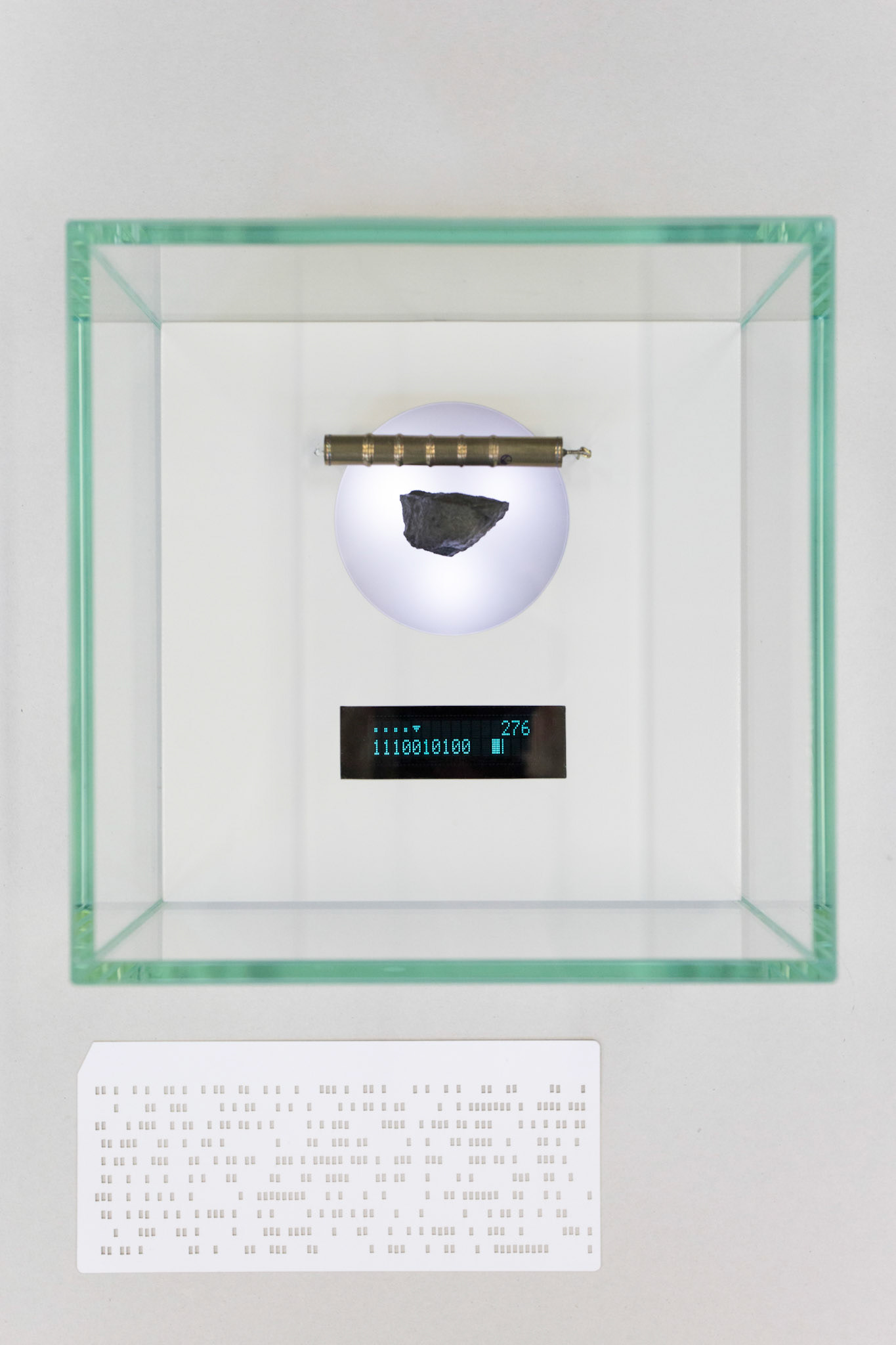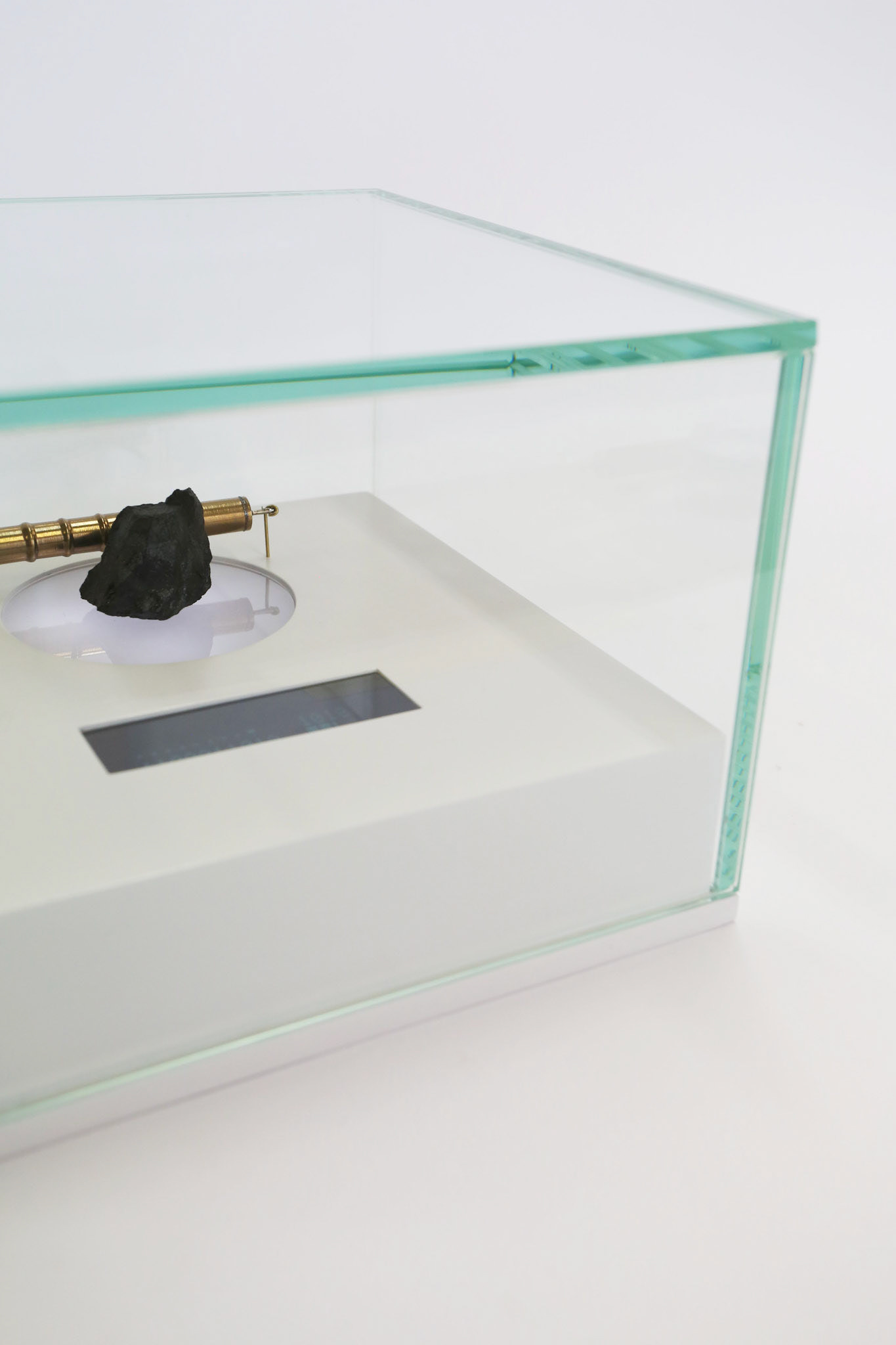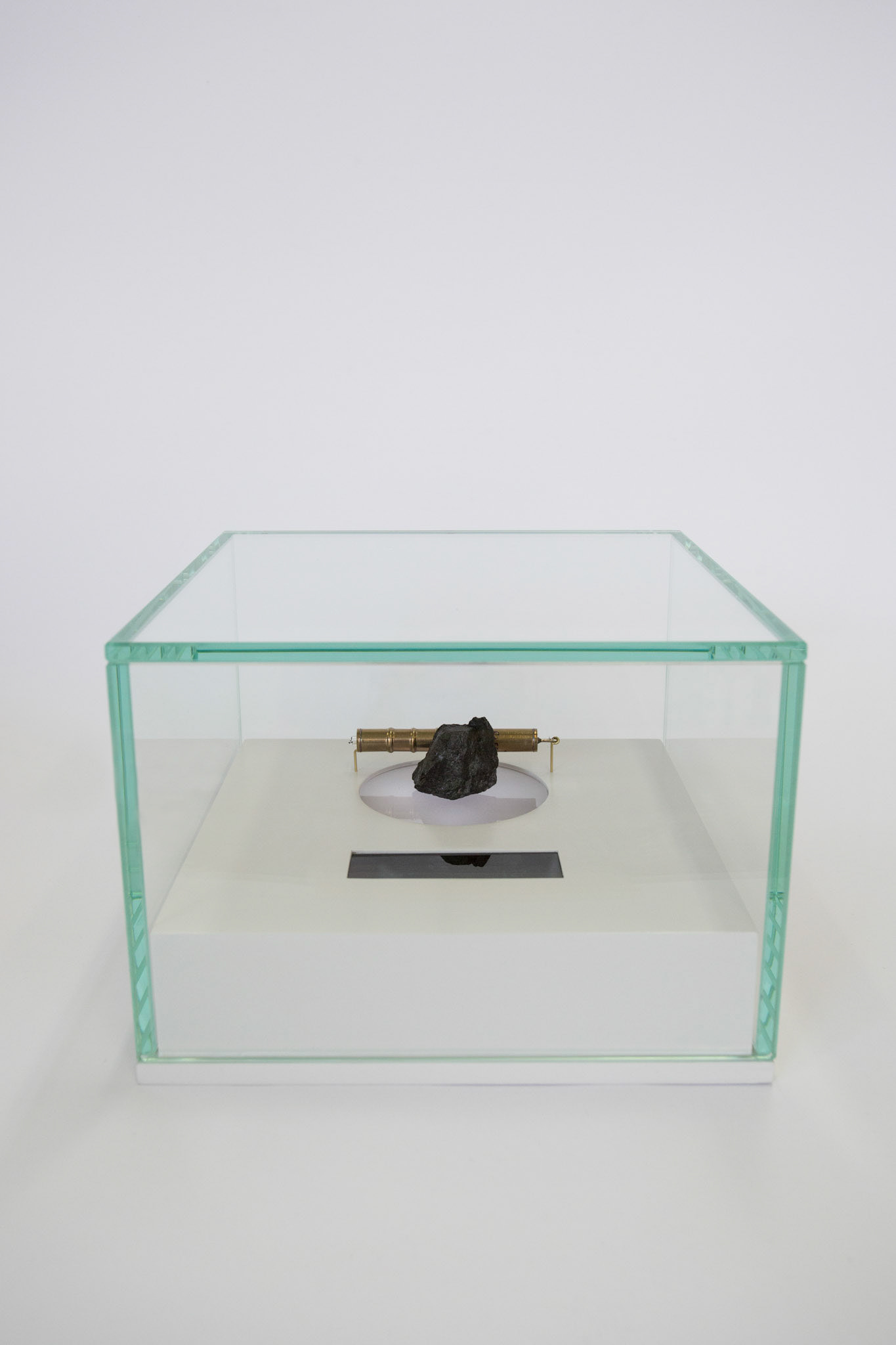Random Generator — An apparatus to explore randomness
True randomness only occurs in our physical world. It is for example a quality of radioactive decay of certain elements and their isotopes. Scientifically the decay of these materials is described by statistical probabilities and the half-life of the substance. The exact moment an atomic nucleus transforms and emits radiation cannot be calculated so far, solely the probability of transformation per time unit.
The „Random Generator“ creates random numbers by measuring the atomic decay of a natural, lightly radioactive mineral (Allanite). This apparatus provides naturally occurring randomness for further study patterns, movements, and sounds.
In collaboration with Verena Bachl
Allanite, a slightly radioactive mineral is used to generate random numbers.




A '0' from the above list is translated into a black pixel and a '1' is shown as a white pixel resulting in a truly random noise (below).
Eight of the above pixels can be translated into a number between the range of 0 to 255 and a pair of numbers can be used to describe a vector on the X and Y axis of the screen drawing a random pattern of lines for the given numbers (below).
Above: The intervals between four radioactive decay events are recorded and compared. If the duration between the fourth and third event is greater than the time passed between the second and first event, a '1' is recorded; otherwise, a '0' will be set. Eight of these event pairs are stored as a simple 8-bit number in the range of 0 to 255 for later use.
The above number generation is driven by the radioactive decay of Torbernite, a hydrated copper uranyl phosphate mineral. The very strong radioactivity of this copper uranite helped generate a large amount of random numbers in a short time for testing before the switch to Allanite was made. In comparison, for every random bit (0 or 1) generated by the Allanite, the Torbernite allows for 12 bits to be collected. Tobernite's radioactive decay delivers one number between 0 and 255 approximately every 0.7 seconds. For the same result, Allanite must be measured for about 8.4 seconds.
